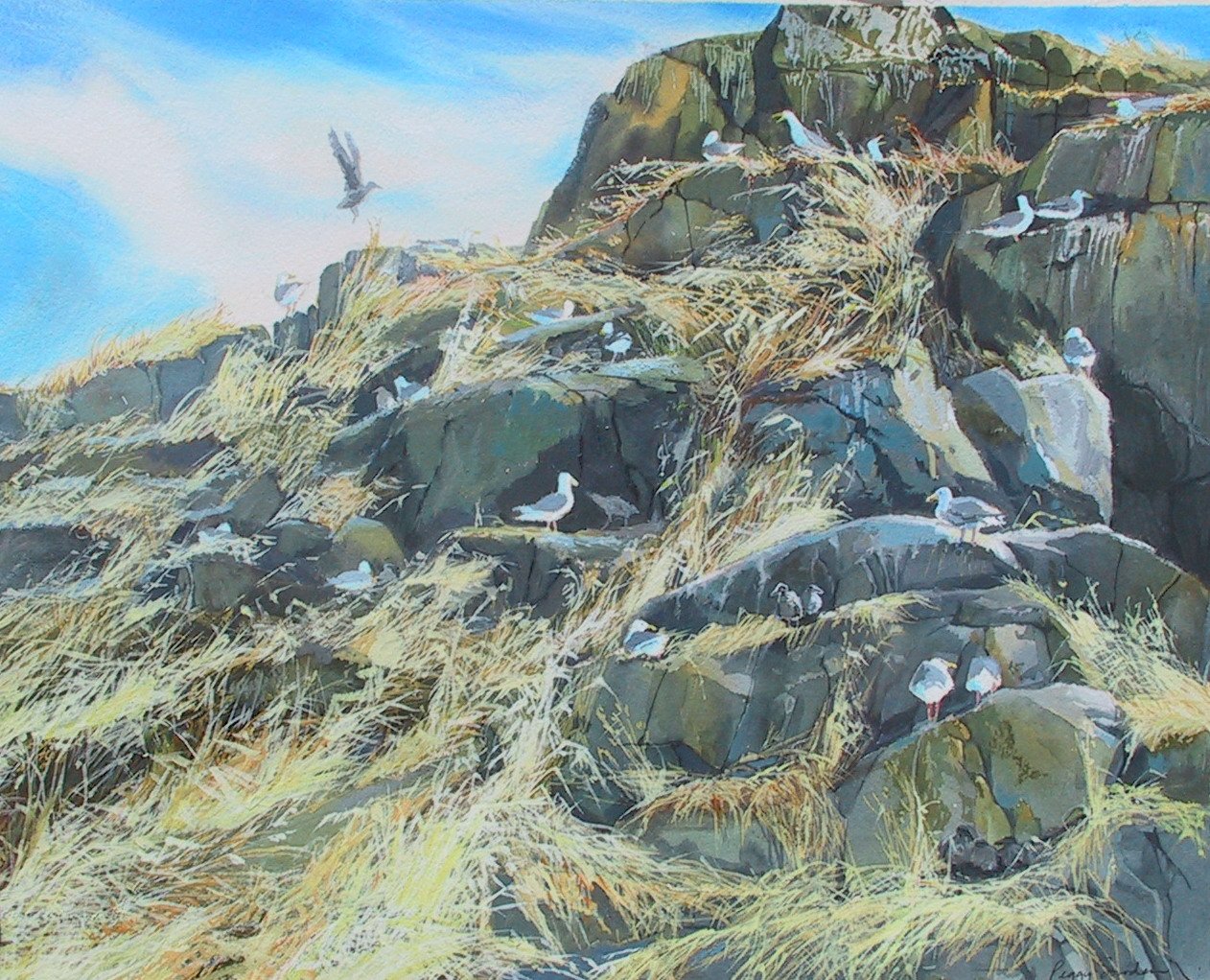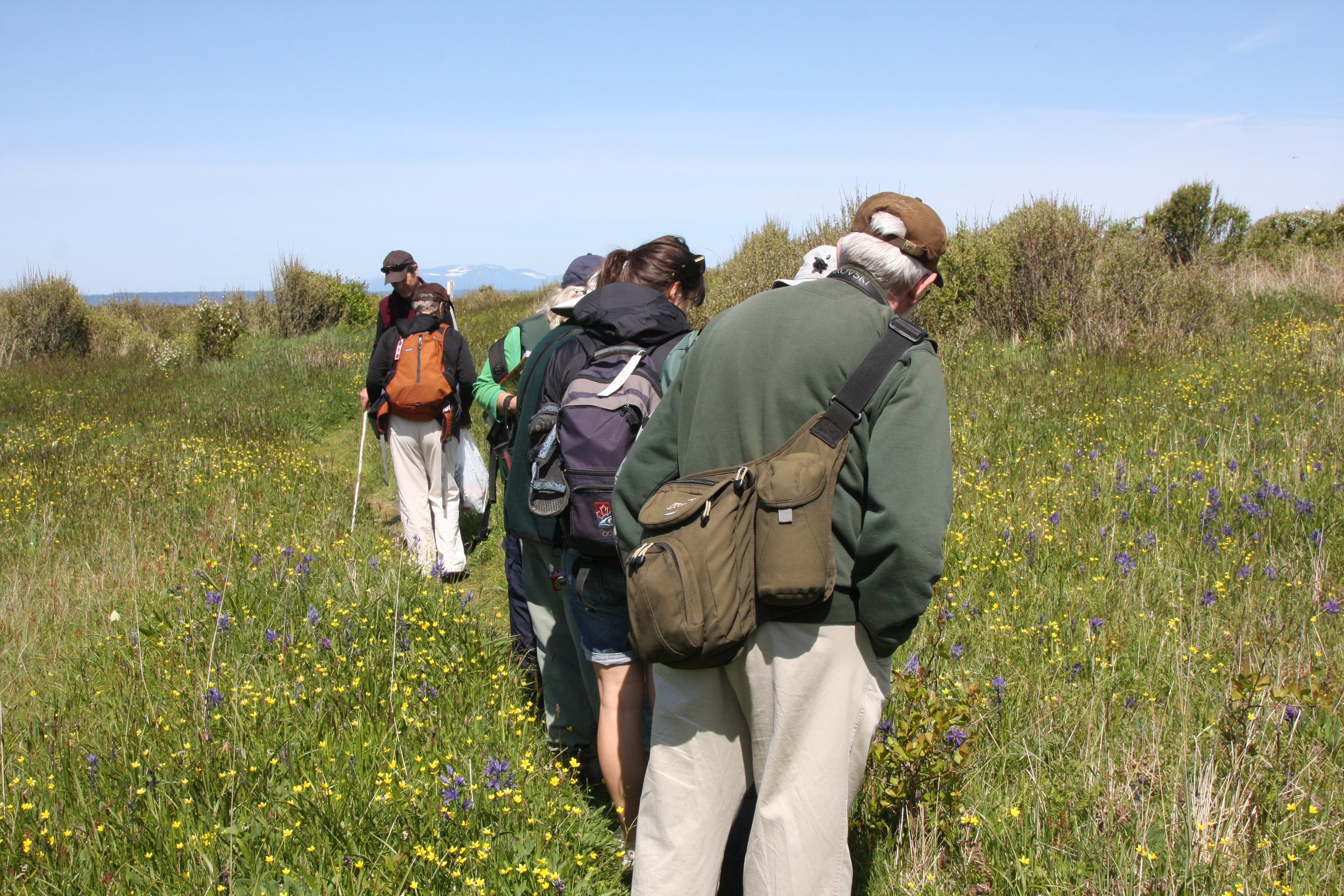In 2010, Mitlenatch Island Stewardship Team (MIST), a volunteer organization, was formed to support Provincial Park's mandate to provide protection for Mitlenatch Island. A large part of the organization's focus is to maintain the volunteer warden program, which is crucial for visitation and conservation of the island.
MIST volunteers respectfully recognize that Mitlenatch Island is within the territory of Coast Salish and Kwakwakaʼwakw First Nations and that the island was and continues to be used by Indigenous Peoples.
MIST volunteer wardens are present throughout the late spring and summer months. Our primary role is the protection of nesting birds as well as the natural features of Mitlenatch Island including the terrestrial flora and fauna and the surrounding marine protected areas.
MIST volunteers help maintain the integrity of the island by greeting all visitors and providing information on the island, including how to experience the island without disturbing the parks features.
We encourage all visitors to check in at the volunteer cabin. Volunteers are happy to provide complimentary guided walks and introductory talks. They also have detailed bird and plant checklists for the island as well as a library full of information on the island’s natural and human history.
MIST wardens also keep detailed records of visitation and natural history, remove invasive plants and maintain the park signs, trails and buildings.
Approximately 70 to 80 volunteers are stewards on Mitlenatch each year, some who have been involved since the 1960s.
MIST Projects
Volunteer wardens live for a week at a time on the island to protect the nesting birds, contribute to scientific monitoring programs and ensure visitors don’t encroach on protected areas and damage the ecosystem while they’re here. Wardens contribute to four scientific monitoring programs on the island:
1. Bird Counts:
Bird counts conducted by the wardens are added into an eBird database for monitoring as part of a Cornell Lab of Ornithology program. According to the MIST data counts, the number of gull nests on Mitlenatch has increased from 1,152 in 2010 to 1,313 in 2015.
2. Beached Bird Survey
Bird Studies Canada’s BC Beached Bird Survey collects baseline information on the causes and rates of seabird mortality by counting the number of seabird carcasses that have washed up onshore.
3. Plant Phenology
MIST keeps track of when 25 different plants bloom on the island.
4. Intertidal Surveys
MIST volunteers conduct surveys of the intertidal community, in a designated area off Northwest Bay. Their data collection methods follow PISCO (Partnership for Interdisciplinary Studies for Coastal Oceans) protocol and and are uploaded into BC Park’s Long-term Ecological Monitoring database that can be used for measuring intertidal community changes over the long-term. Once collected, these data can be used by PISCO and by other members of the scientific community.
5. Sea Star Syndrome Surveys
Sea Stars are surveyed and measured, and with the recent proliferation of Sea Star Wasting Syndrome, data were also submitted to the Vancouver Aquarium, who have been tracking distribution and impact of the disease.
6. Eelgrass Beds
MIST members are mapping two eelgrass beds in Northwest Bay and Home Bay, to assess potential changes in density and distribution, over time.
7. Cetacean and Turtle Sightings
Whale, porpoise, dolphin and sea turtle observations are reported to the Vancouver Aquarium by MIST volunteers.
8. Invasive Species
To protect the natural ecology of the island, MIST volunteers remove invasive species, including Himalayan blackberry and sedum acre.

